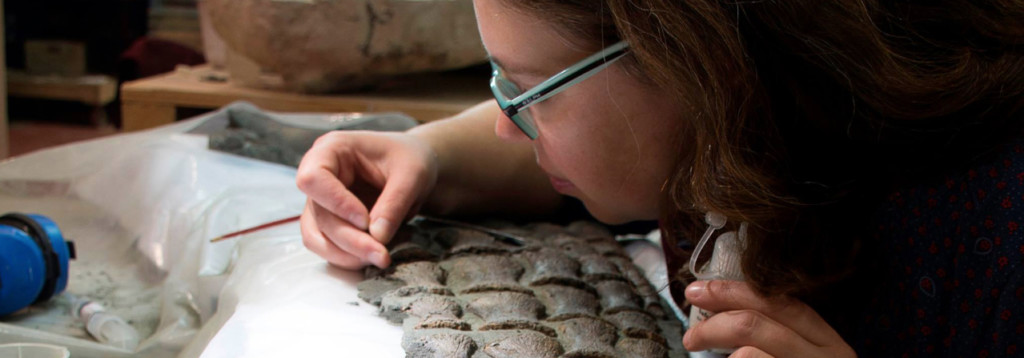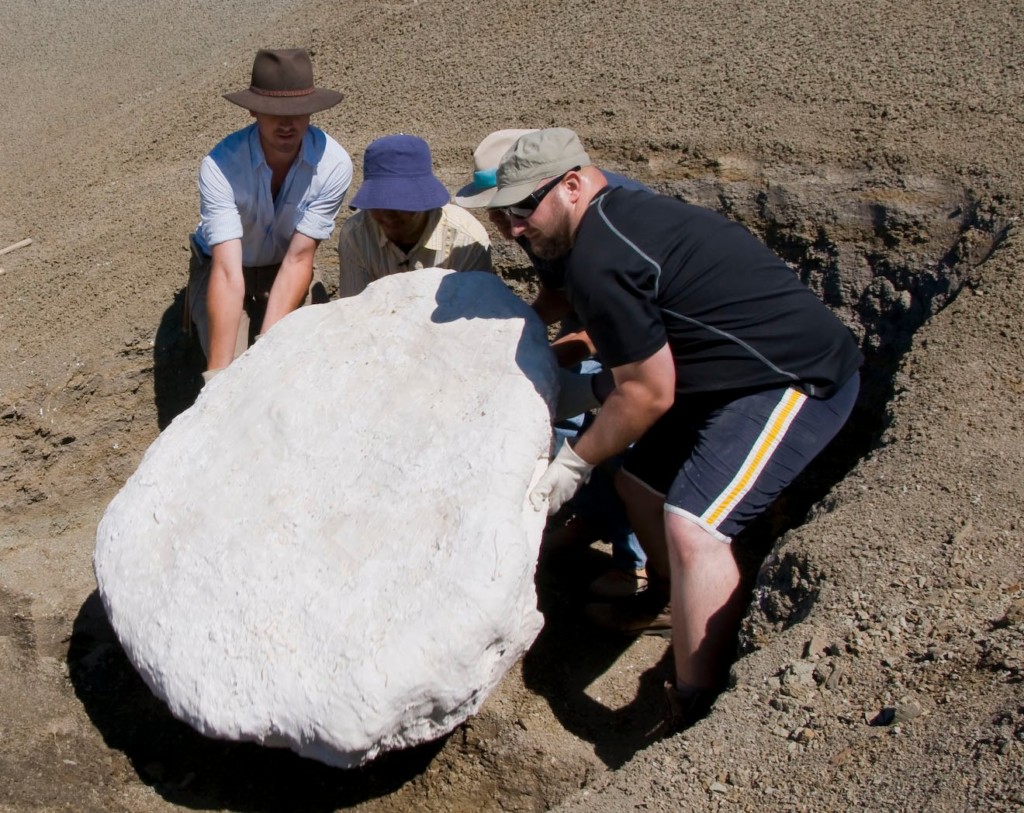
Behind the Scenes: Preparing Fossils at the Royal Tyrrell Museum
What happens to fossils after they’ve been taken from the ground?
Believe it or not, most fossils arrive at museums with much of the ground still attached. Removing this extra material is the job of lab technicians within the museum preparation labs.
Fossils are usually quite delicate when found in the field, meaning that paleontologists are in a race against the elements to excavate the fossils before they erode away. Because of this, there is usually not enough time to do the fine, precision work necessary to free the bones entirely from their rocky tombs. Such fossils are wrapped in protective plaster jackets and transported to museum labs for further excavation.

Field workers from the Royall Tyrrell Museum work together to lift a fossil, already encased in its protective jacket (from the Royall Tyrrell Museum Facebook page)
Recently, the Royall Tyrrell Museum (not a creationist institution, sadly) released a video showcasing the painstaking work that lab technicians go through to turn these nondescript chunks of rock into the beautifully prepared specimens seen in exhibit halls. View the embedded video below.
NOTE: As you watch, keep an eye out for Borealopelta, a newly unveiled dinosaur fossil that we have written about before.
Featured image: a lab technician painstakingly removes a plesiosaur flipper from the encasing matrix (from the Royal Tyrrell Museum Facebook page)
*Orchard of Life Science is not affiliated with the Royal Tyrrell Museum.
